Bergdala SpinnhusA vadmal adventure, June 2003 |
|
|
|
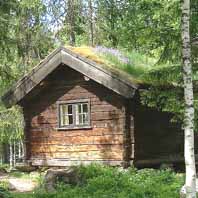
|
Norway is beautiful with lots of mountains, some of them still with snow on the top...
Mjonøy is a cultural centre located on the highway between Haugesund and Oslo. It has cabins, gift shop and the hammer mill. The five of us took two cabins, equipped with electricity and heat. Note the sod roof.
|
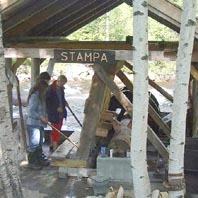
|
|
The "Stampa" is administered by the local Husflidslag. Arne Skevik took good care of us on the Saturday morning, starting the wood fire for the cauldron and providing information on how to operate the hammer mill.
|

|
Laura Fry from Canada, Kerstin Fröberg, Elly Grönberg, Ingrid K Hanssen and Elvy Norin from Sweden wove fabric in various lengths and from different types of wool yarns to be fulled in the mill. In all, we had approximately 100 meters of fabric.
| ||

|
The hammer mill is in a shed by the bank of a small river. The water was running well, and the mill was powered by the water wheel. The weather was good - not too warm, and a bit breezy to deter some of the mosquitoes.
|

| ||
|
The mill has two troughs, each with two hammers that work alternately. The fabric needs to fill the trough completely for the hammers to work properly. The cloth is then wetted out with warm water from the wood fired cauldron and fulling begins.
|

|
As fulling progresses, the fabric must be removed from the trough and rearranged to make sure that the fabric fulls evenly. It must also be inspected to see how close to "done" it is getting. Laura is checking for stability by running a fingernail across the threads.
| ||

|
The fulling proceeded in approximately 15 to 20 minute intervals. The cloth is kept rotating in the trough. We found that adding more water provided lubrication to keep the fabric rotating well.
|

| ||
|
Once the fabric was declared "done", it was removed from the trough and laid out on the ground. Kerstin and Ingrid are stretching and rolling the cloth, which helps to set the grain so that it is straight, and also let some of the water drain out of the fabric. Saturated wool is very heavy!
|

|
After the water had more or less stopped dripping from the cloth, it was folded back and forth on itself in a bundle which was then turned so it would begin to dry.
| ||

|
Look at our hard work!
Elly discovered the joys of "stamping"...... |
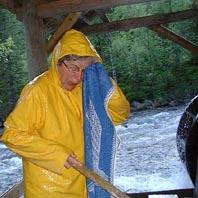
| ||
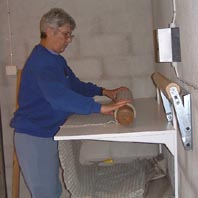
|
Once home, Kerstin and Laura decided to cold mangle their cloth to help compress it. Laura is carefully rolling the fabric onto the dowel.
| |||
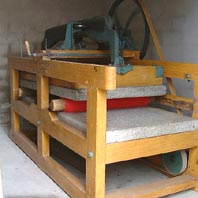
|
The cold mangle is usually used to press linens, but works well to press wool, too.
The cloth is pressed between the large granite stones of the cold mangle. |

| ||
|
Red fabric before "stamping"...
|
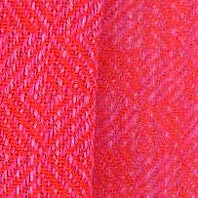
|
... and after.
This fabric shrunk approximately 15 % both widthwise and lengthwise. | ||
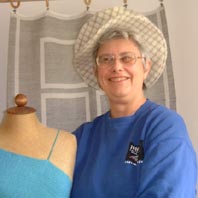
|
We started small... two hats of medieval type
|
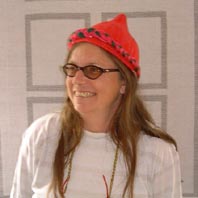
| ||

|
Then we got braver:
from Laura's fabric a coat with handwoven reflecting bands, from Kerstin's a cape/jacket. |
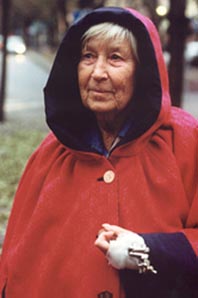
| ||
|
Two articles about vadmal can be found under
articles.
| ||||
|
Bergdala Spinnhus Bergdala 27 365 92 Hovmantorp Sweden kerstin@bergdalaspinnhus.com www.bergdalaspinnhus.com | ||||